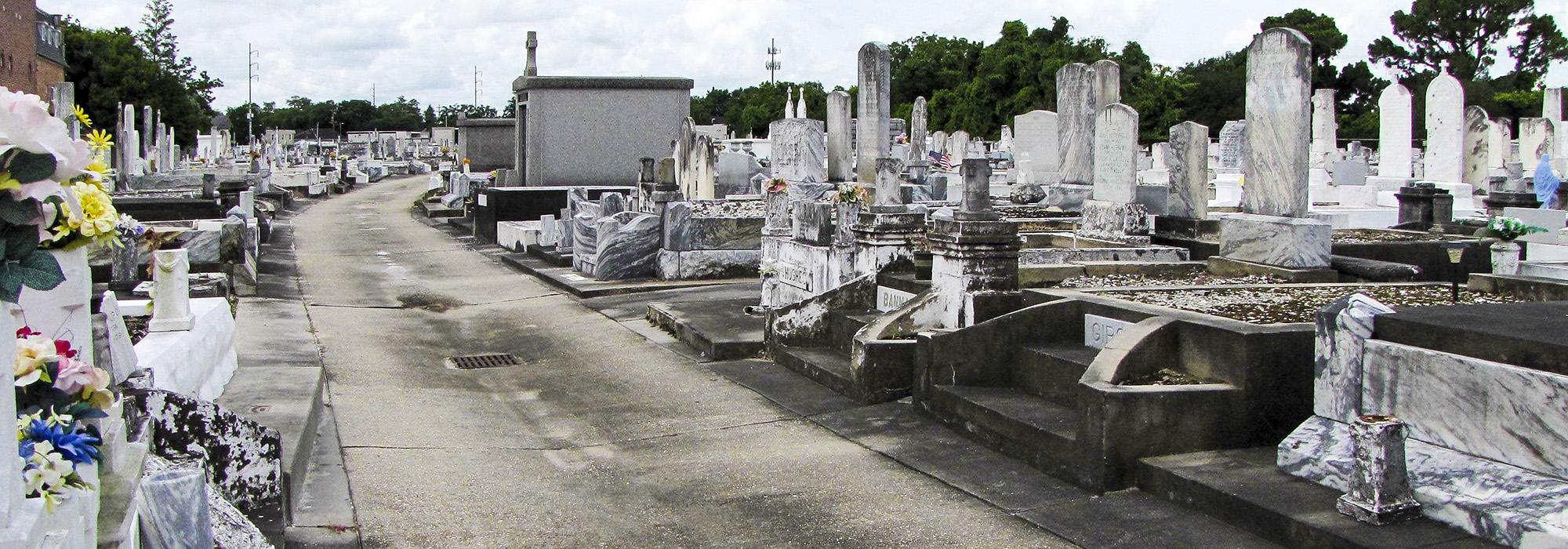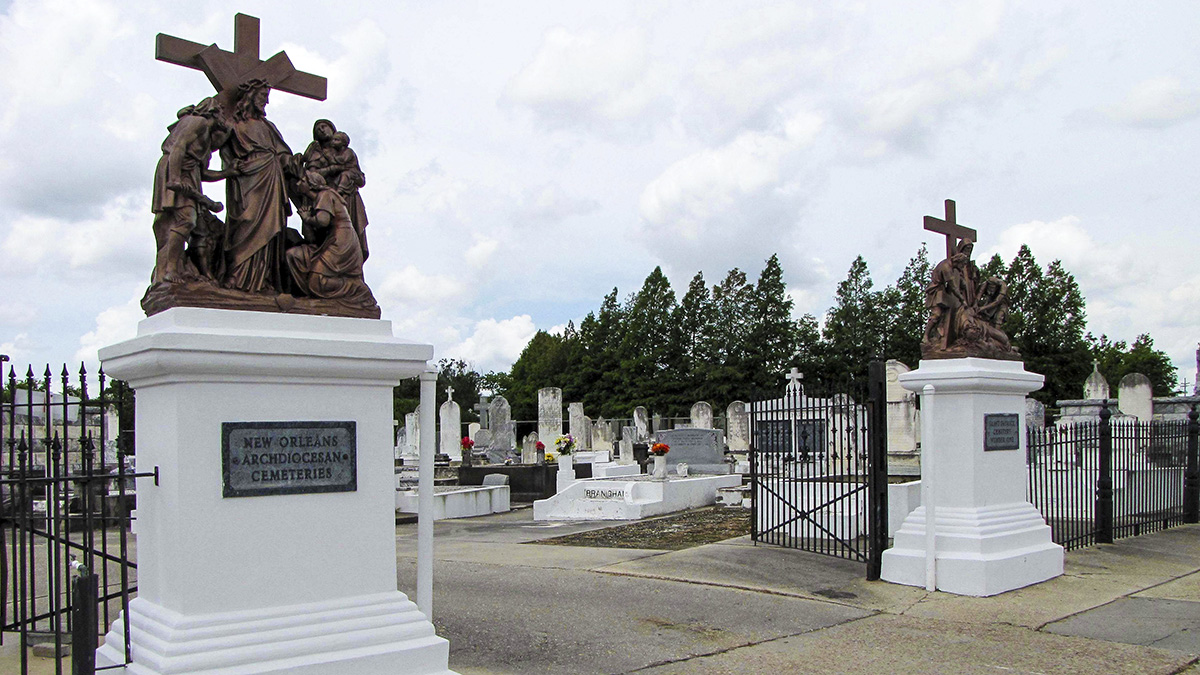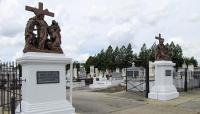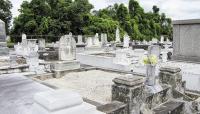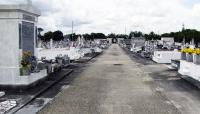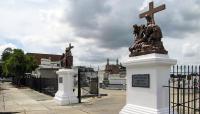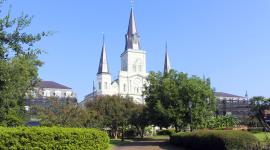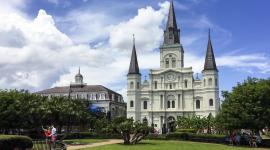Established in 1841, St. Patrick Cemetery is associated with the parish of St. Patrick Catholic Church, the second-oldest church in the city (after St. Louis Cathedral). The parish recognized its need for a cemetery in the early 1840s, at the height of the Irish famine and, consequently, the height of Irish immigration to New Orleans. The cemetery’s construction also coincided with the yellow fever epidemic of 1853, which was particularly devastating to the Irish community.
The cemetery comprises three distinct sections (named No. 1, No. 2, and No. 3), which are divided by Canal Street and City Park Avenue. Despite this fragmentation, the sections form one long, rectilinear strip, with a paved central walkway bisecting each of the three sections and connecting them visually across the intersecting streets. St. Patrick No. 1, the oldest and the largest, is parallel to Cypress Grove Cemetery and features a large mausoleum at the terminus of its central walkway. The expedient burials in this section during the 1853 yellow fever outbreak are evident not only in the multitude of tombstones bearing that date, but also in the haphazard, random arrangement of the graves. St. Patrick Nos. 2 and 3 are across Canal Street and run parallel to Canal Boulevard. They follow a more formal layout, with tombs ordered in long rows that flank the central walkway, with slender strips of grass filling in the interstitial spaces between rows. The chronology of the sections serves to document the integration of New Orleans’ Irish community: while the family names in St. Patrick No. 1 are almost exclusively Irish, there is increasing variation in Nos. 2 and 3, as Italian, French, and English names appear alongside Irish ones.



